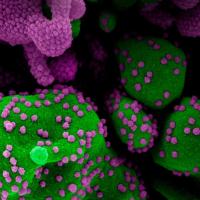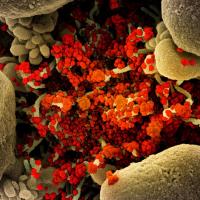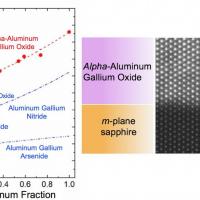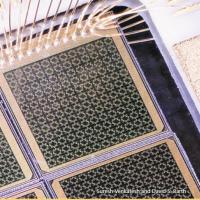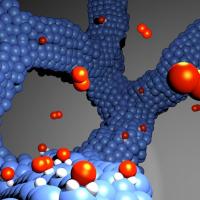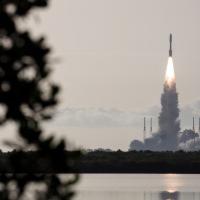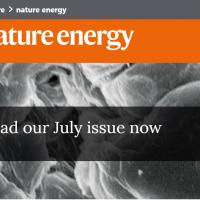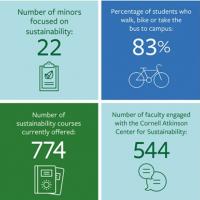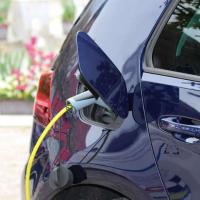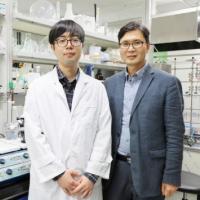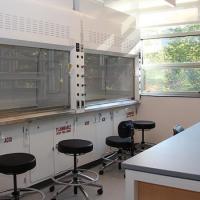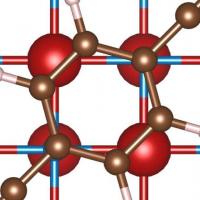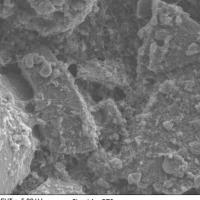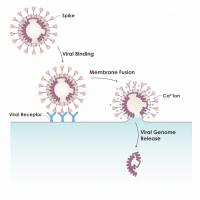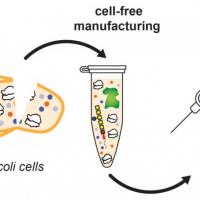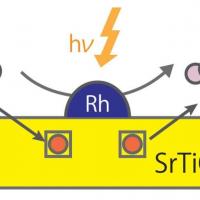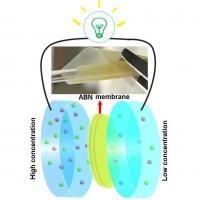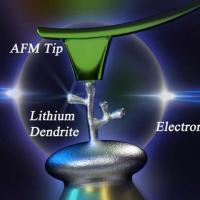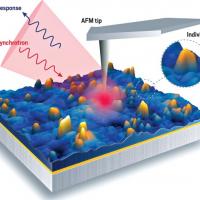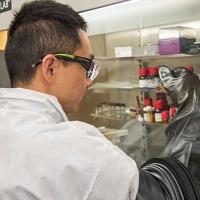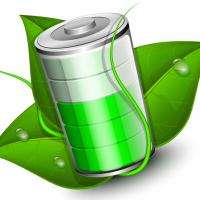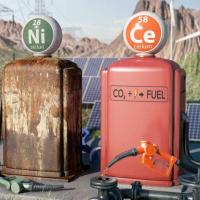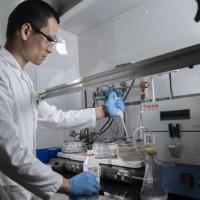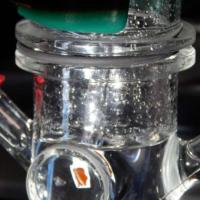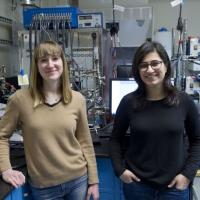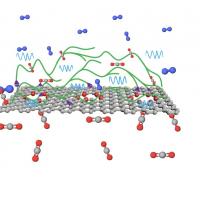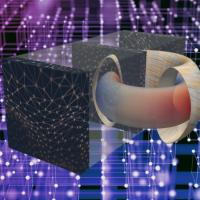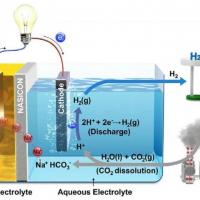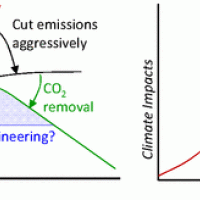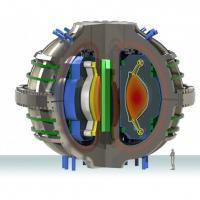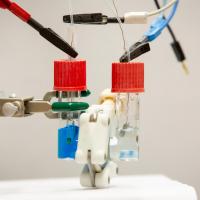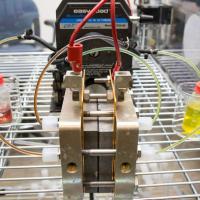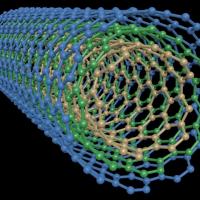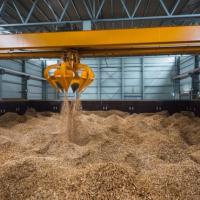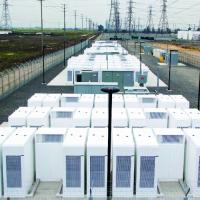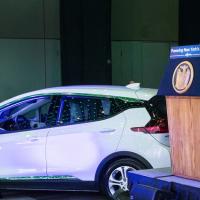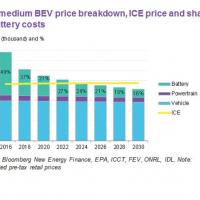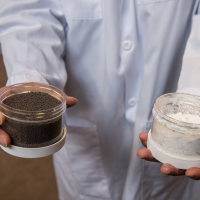The collaboration was led by co-senior authors Debdeep Jena and Huili Grace Xing, both professors in electrical and computer engineering and in materials science and engineering. The team also included David Muller, the Samuel B. Eckert Professor in Applied and Engineering Physics, who specializes in electron microscopy, and Darrell Schlom, the Herbert Fisk Johnson Professor of Industrial Chemistry, who grows oxide materials for electronic uses.
Featured Reports
Sandia National Laboratories seeking candidates for Truman Distinguished Postdoctoral Fellowship in National Security Science and Engineering
Sandia National Laboratories |
August 26, 2021
Six months of COVID vaccines: what 1.7 billion doses have taught scientists
nature briefing; photo credit: Guerchom Ndebo/Getty |
June 4, 2021
Passing the acid test: New, low-pH system recycles more carbon into valuable products
Science Daily |
June 3, 2021
Compound commonly found in candles lights the way to grid-scale energy storage
Science Daily |
May 20, 2021
New York state's climate goals are achievable, research finds
Yale Climate Connections |
April 1, 2021
COVID research updates: Concerns emerge over a COVID vaccine’s prowess against a variant
Nature |
March 30, 2021
Study finds that wind energy output increases when people need heat the most
Tech Xplore |
March 18, 2021
In a leap for battery research, machine learning gets scientific smarts
SLAC National Accelerator Laboratory |
March 8, 2021
COVID research updates: Nimble coronaviruses could leap straight from bats to humans
Nature.com |
February 11, 2021
Engineers create hybrid chips with processors and memory to run AI on battery-powered devices
Science Daily |
January 13, 2021
Effects of Anion Carriers on Capacitance and Self‐Discharge Behaviors of Zinc Ion Capacitors
Wiley Online Library |
December 1, 2020
First room-temperature superconductor excites — and baffles — scientists
Nature.com |
October 27, 2020
First-cycle voltage hysteresis in Li-rich 3d cathodes associated with molecular O2 trapped in the bulk
Nature Energy |
September 24, 2020
NASA has launched the most ambitious Mars rover ever built: here’s what happens next
nature |
August 6, 2020
After 40 years, researchers finally see Earth’s climate destiny more clearly
AAAS Science |
July 28, 2020
Current status and future directions of multivalent metal-ion batteries
Nature Energy |
July 23, 2020
Liang, Y., Dong, H., Aurbach, D. et al. Current status and future directions of multivalent metal-ion batteries. Nat Energy (2020).
Engineers find neat way to turn waste carbon dioxide into useful material
Science Daily |
June 10, 2020
Cheaper, lighter and more energy-dense: The promise of lithium-sulphur batteries
techxplore.com |
June 5, 2020
Breaking the mold: An unusual choice of material yields incredibly long-lasting batteries
Science Daily |
June 3, 2020
Cornell engineers are crunching numbers to fight everything from coronavirus to climate change
Cornell Engineering |
May 27, 2020
Inside the New Samuel C. Fleming Molecular Engineering Laboratories
Cornell Engineering |
May 27, 2020
A new electrolyte design that could enhance the performance of Li-ion batteries
Phys.org |
May 13, 2020
Jeff Sward Helps to Engineer a Sustainable Future
Sibley School of Mechanical and Aerospace Engineering |
April 23, 2020
Air pollution levels plummet following worldwide stay-at-home orders
kvoa.com/news/local-news |
April 22, 2020
New hybrid material improves the performance of silicon in Li-ion batteries
Phys.org |
April 21, 2020
Water-conducting membrane allows carbon dioxide to transform into fuel more efficiently
Phys.org |
February 6, 2020
Ecofriendly catalyst for converting methane into useful gases using light instead of heat
Phys.org |
January 27, 2020
Harvesting Ocean Energy: Bio-Inspired Membrane Efficiently Produces Electricity From Saltwater
SciTechDaily |
January 10, 2020
A new method to study lithium dendrites could lead to better, safer batteries
Phys.org |
January 9, 2020
New polymer material may help batteries become self-healing, recyclable
Phys.org |
December 23, 2019
Researchers develop new materials theory relevant to ultrafast electronics, batteries and more
Phys.org |
December 19, 2019
Scrubbing carbon dioxide from smokestacks for cleaner industrial emissions
Phys.org |
December 11, 2019
Turning Waste Heat Into Hydrogen Fuel Using Reverse Electrodialysis
SciTechDaily |
November 23, 2019
New analytical methods help researchers peek inside energy devices
https://cen.acs.org/index.html |
November 19, 2019
Storing energy in hydrogen 20 times more effective using platinum-nickel catalyst
Phy.org |
November 14, 2019
A new method of extracting hydrogen from water more efficiently to capture renewable energy
Phy.org |
October 29, 2019
Platinum-graphene fuel cell catalysts show superior stability over bulk platinum
|
September 19, 2019
Penn State, Lightsource BP break ground on largest solar project in Pennsylvania
|
September 9, 2019
Researchers explore use of new materials to create more efficient solar cells
Phy.org |
June 28, 2019
Structural defects on converted bismuth oxide nanotubes enable highly active electrocatalysis of carbon dioxide reduction
Nature Communications |
June 26, 2019
Discovery sheds light on next-generation solar cell technologies
National Science Foundation |
June 11, 2019
University of Delaware Engineers Develop Fuel Cell System that Helps Environment
FuelCellsWorks |
May 25, 2019
Artificial Intelligence Accelerates Development of Limitless Fusion Energy
SciTechDaily |
May 18, 2019
Researchers improve stability of vanadium disulfide used in lithium-ion batteries
pv magazine |
May 13, 2019
New discovery makes fast-charging, better performing lithium-ion batteries possible
Phy.org |
April 16, 2019
Business Impact Sorry, graphene—borophene is the new wonder material that’s got everyone excited
MIT Review |
April 5, 2019
ANU finds 530,000 potential pumped-hydro sites worldwide
Australian National University |
April 1, 2019
Florida utility plans world’s largest battery combined with solar
Energy Storage News |
March 28, 2019
Secretary Perry Launches Versatile Test Reactor Project to Modernize Nuclear Research and Development Infrastructure
Energy.gov |
February 28, 2019
U.S. Carbon Emissions Surged in 2018 Even as Coal Plants Closed
The New York Times |
January 11, 2019
This ‘flow battery’ could power green homes when the sun goes down and the wind stops blowing
Science |
August 13, 2018
Here’s how much cities contribute to the world’s carbon footprint
Scientific American |
July 11, 2018
The role of carbon capture, utilization, and storage in forming a low-carbon economy
energy.gov |
May 21, 2018
EPA declares biomass plants carbon neutral, amid scientific disagreement
Scientific American |
April 24, 2018
The 'new' battery that may be vital for a zero carbon future
BBC |
April 9, 2018
Researchers have made a potentially vital breakthrough in the search for renewable energy storage.
Vestas taps car battery know-how for wind power storage
Reuters |
April 4, 2018
Energy storage is becoming increasingly important as production of renewable energy rises, because the wind might not blow or the sun shine during the peak hours when most consumers turns on their lights and appliances.
CSE to administer Charge NY Drive Clean Rebate Initiative
Center for Sustainable Energy |
March 22, 2018
New generation of batteries could better power aerial drones, underwater robots
Science |
March 8, 2018
A Fossil Fuel Technology That Doesn't Pollute
NEWSWISE |
January 20, 2018
NEWSWISE | January 1, 2018







